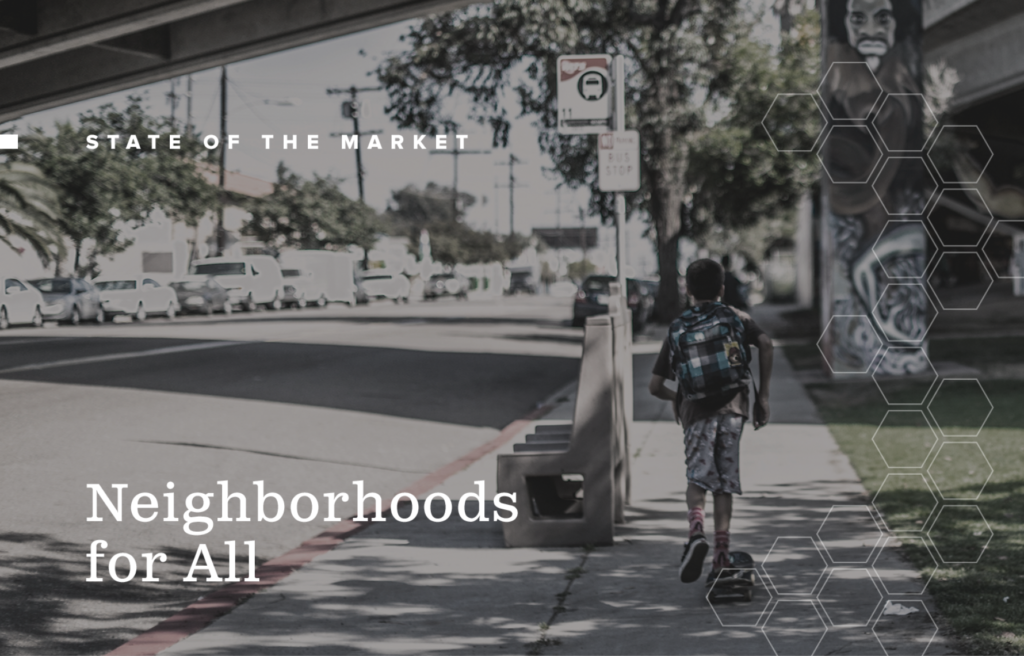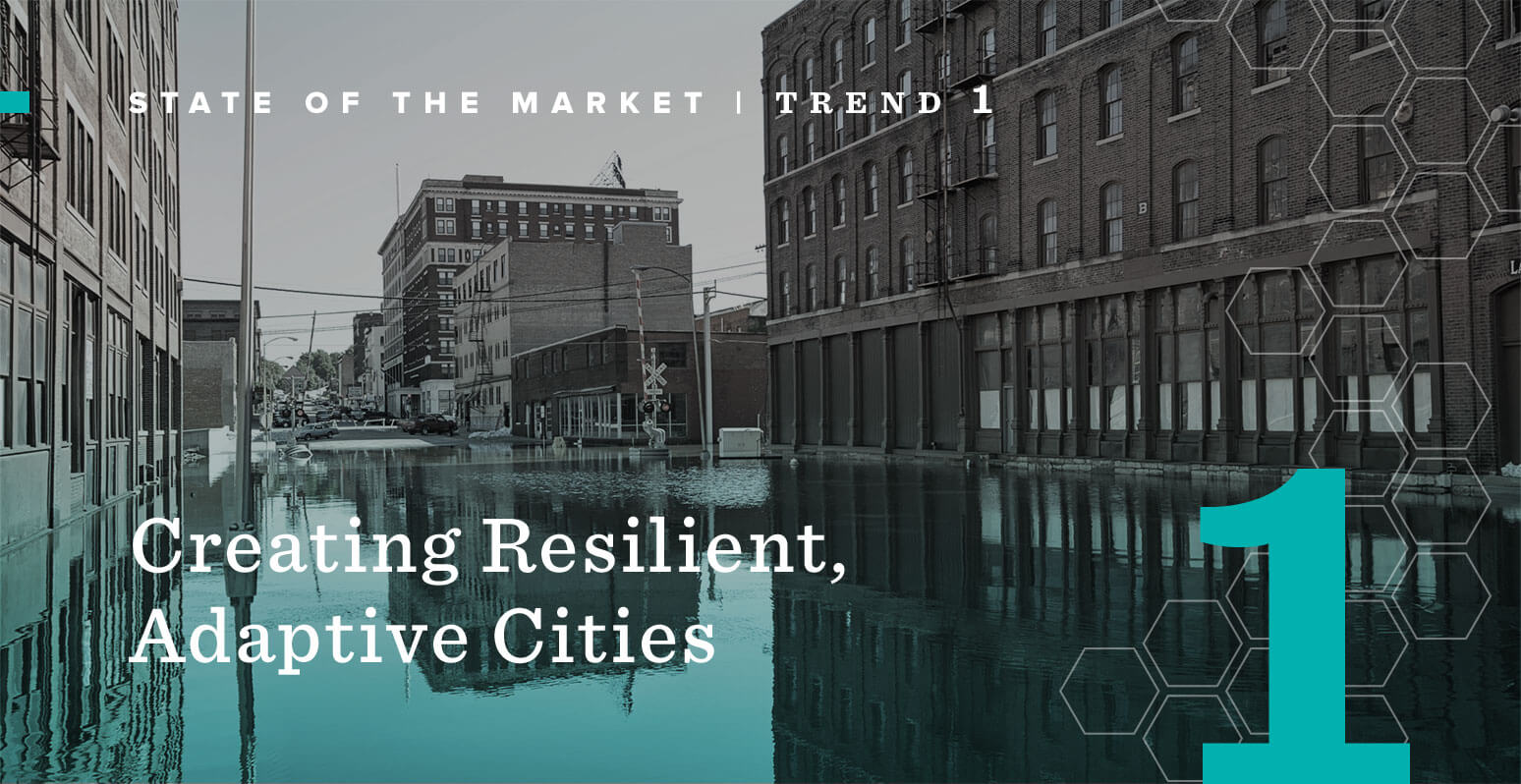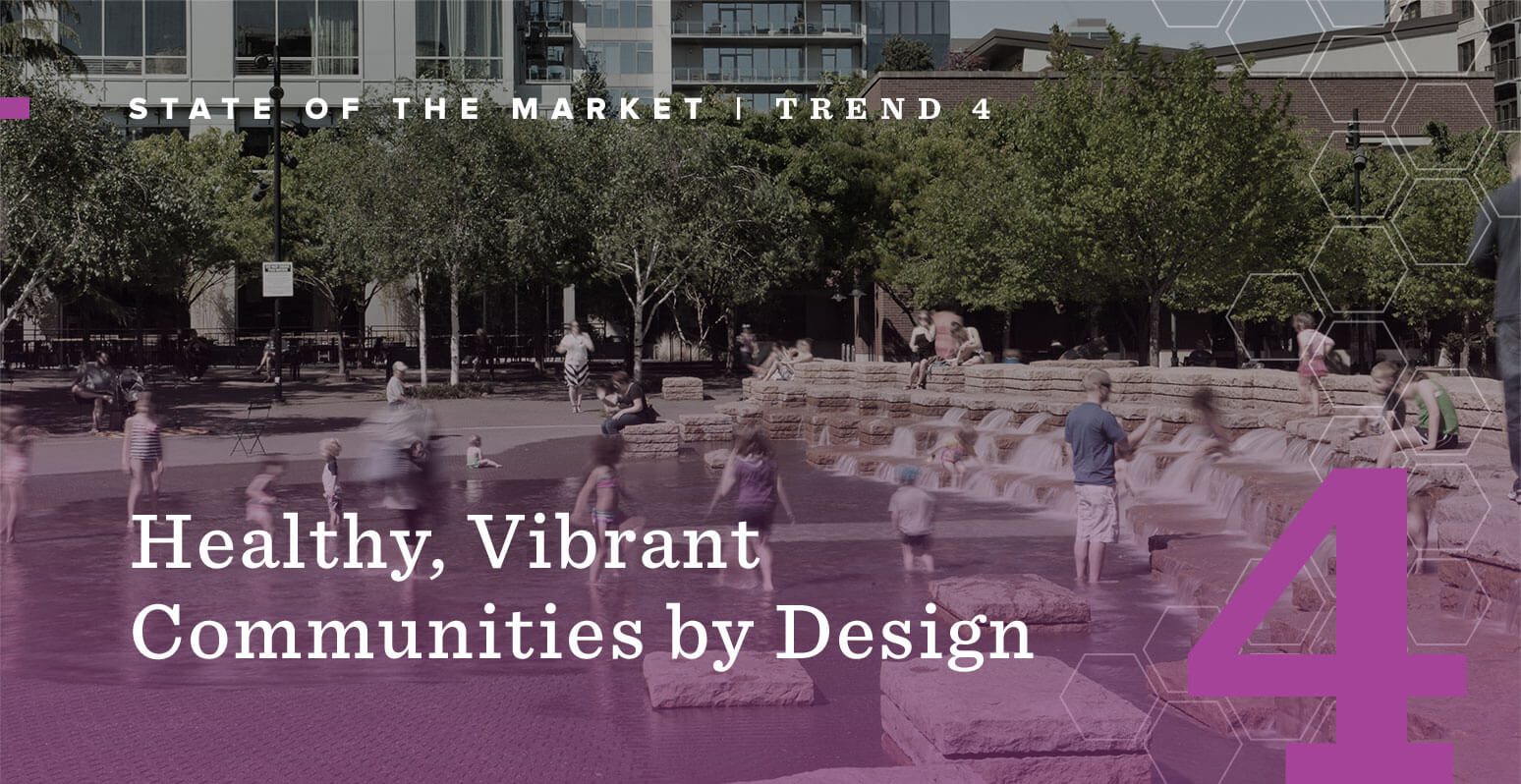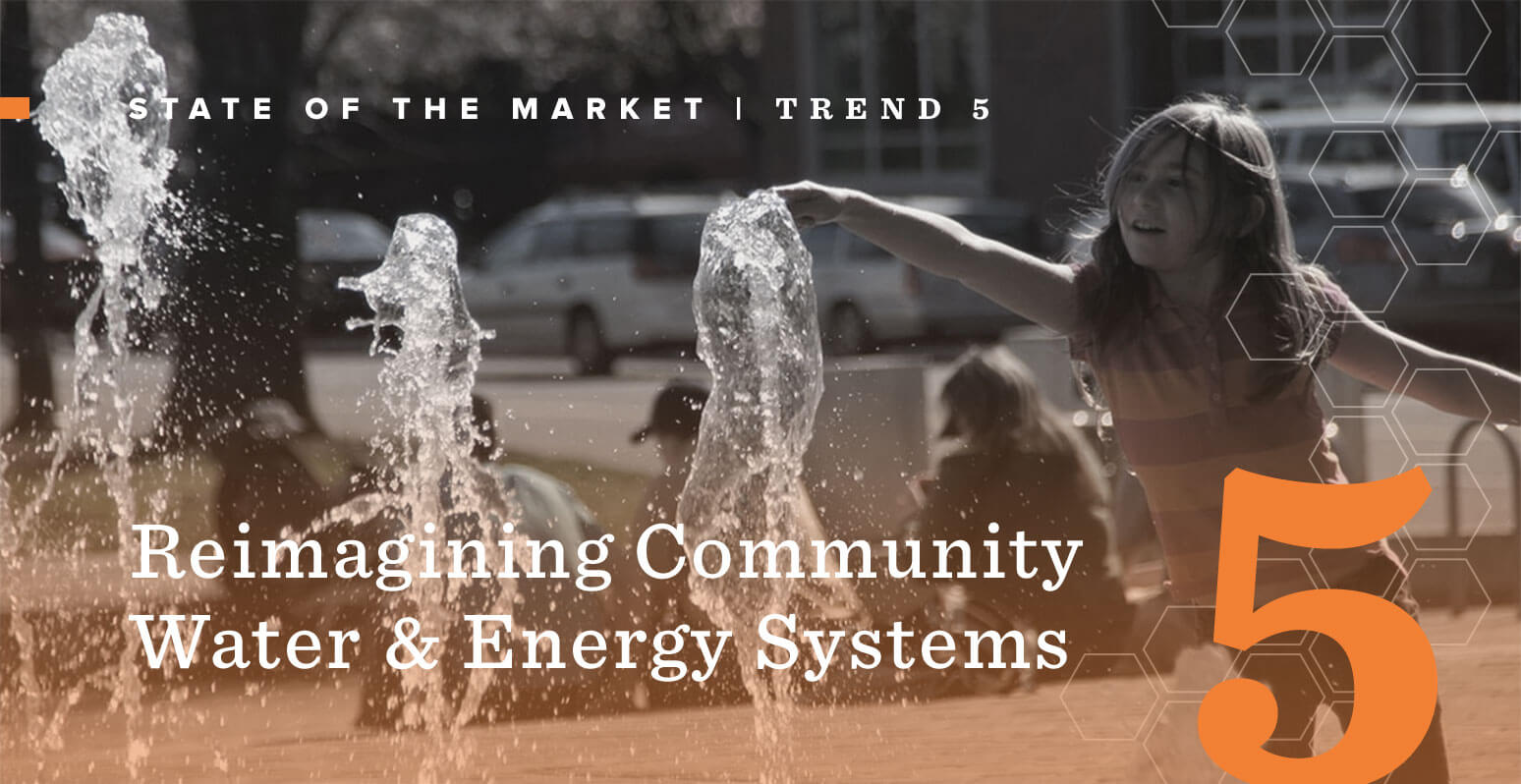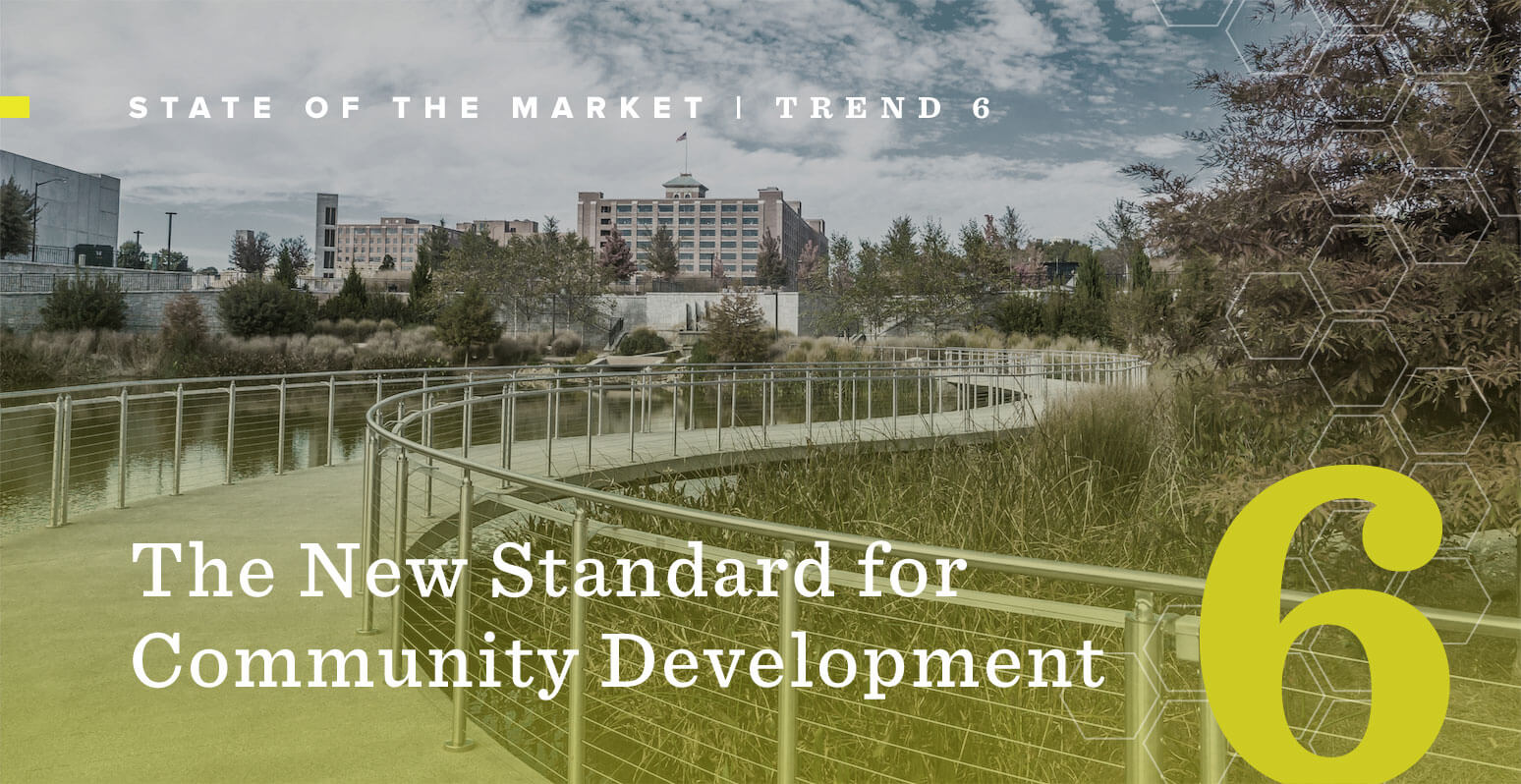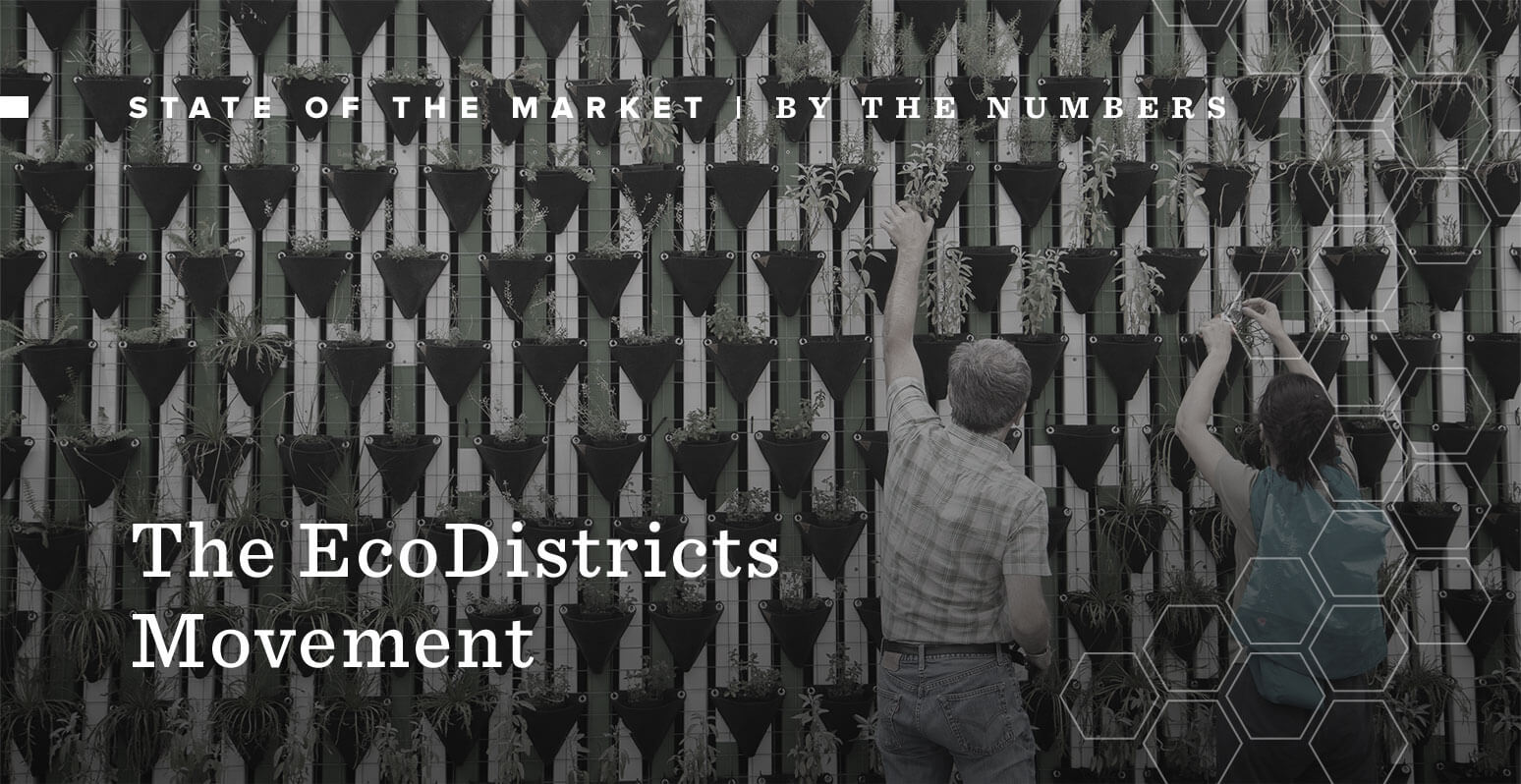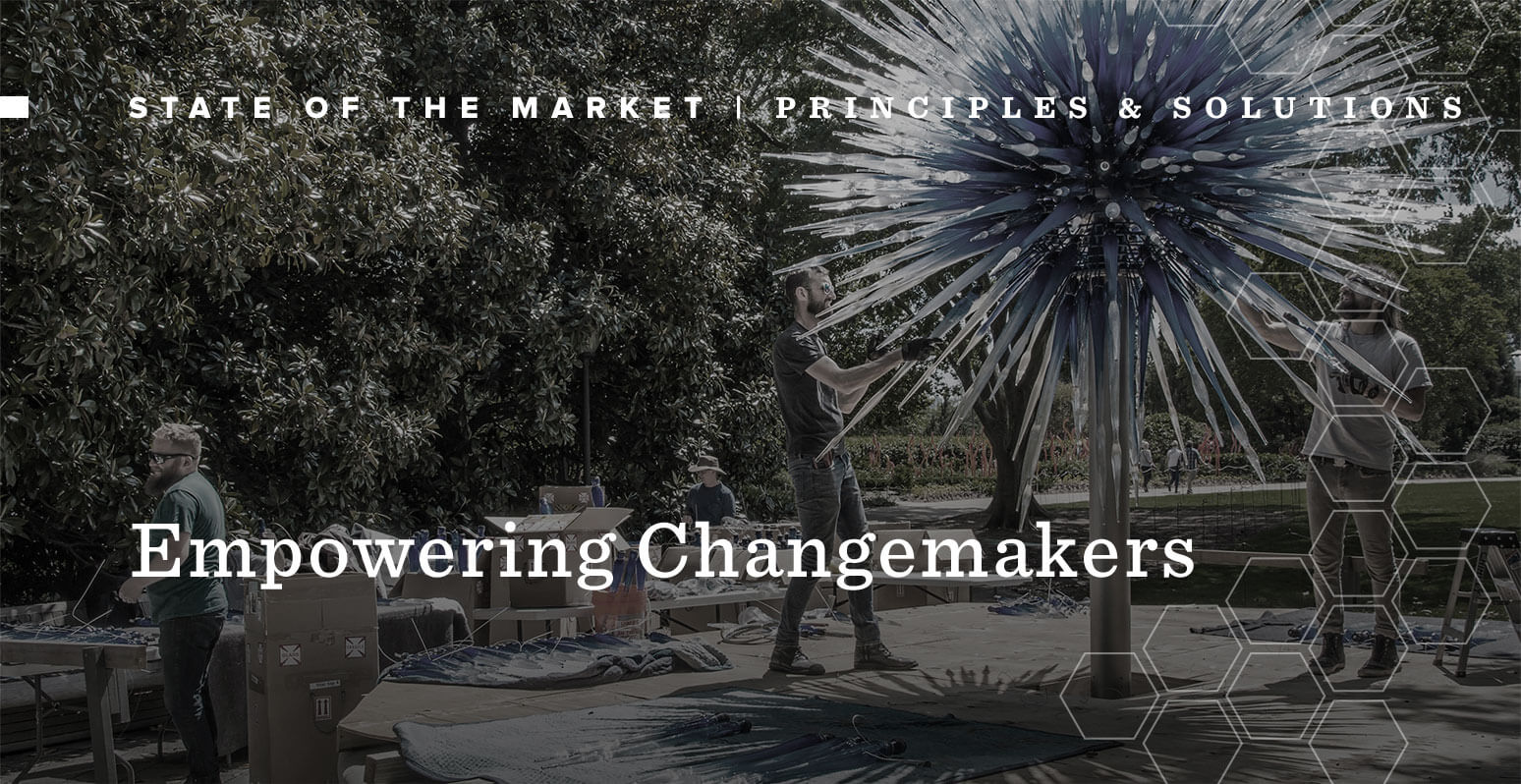Our current national climate might well be called the most divisive and unsettling since the Civil Rights Movement of the 1960s. Issues of race, poverty, equity, resilience, and climate change demand a sweeping re-examination of how we live in an era when our social and natural systems are straining. At the same time, over 75 million people are migrating to the world’s cities in search of homes, jobs, and community, and creating a massive urban design challenge we can’t afford to ignore. In response, emerging urban leaders are reimagining the future of cities. They are harnessing the energy of civic entrepreneurs, championing local arts and culture, designing intelligent infrastructure for a changing climate, and cultivating community-based placemaking. They are bending the arc of cities toward better social and environmental outcomes and embracing new standards, including EcoDistricts Certified, that set a sustainability and equity agenda from the outset. Neighborhood by-neighborhood, district-by-district, we’re seeing a new vision of the modern city take hold — one in which equity, resilience, and climate protection drive innovation, spur investment, and create stronger, more sustainable communities.
A continued and intensifying propensity to hurricanes in the southern U.S. and Caribbean, earthquakes in Mexico, civic unrest around the world, and economic disparities, pushed the fundamental questions citymakers face to the top of national conversations: How can we design cities to bounce back from disaster? How can we help communities weave strong social fabrics in the face of dramatic stress? How can we plan for what’s next? Building resilience into our cities requires a shift – from reacting to stress to proactively designing for it. In the aftermath of so many devastating climate, economic, and social events, it’s up to planners, developers, and community leaders to push for sustainable, equitable urban regeneration to build strong cities for the future. Here are a few examples of what’s in the works now.

Stories/Solutions
Building for tomorrow’s Toronto
In East Harbour, a 60-acre mixed-use development project creates a new neighborhood on an old industrial site.
Sustainable cities start with sustainable neighborhoods
C40, which develops and implements policies and programs that generate measurable reductions in both greenhouse gas emissions and climate risks, spotlights neighborhoods as the building blocks of green, climate-safe cities.
Yesterday’s brownfield,
tomorrow’s cultural hub
In Austin, the 90-acre Seaholm EcoDistrict is transforming from a polluted brownfield and flood-prone area into a vibrant mixed-use development anchored by a restored creek and green infrastructure.
Where creativity meets
climate resilience
From Atlanta to San Francisco, Enterprise Community Partners is funding creative placemaking to strengthen the connection between cultural and climate resilience. The goal: deepen human networks while remaking communities in the face of climate change.
As the concentration of poverty in American cities intensifies, the cycle of poverty becomes even more entrenched. Disinvestment spurs disengagement, pulling the threads of community apart and isolating our most vulnerable populations. Disrupting that cycle requires more than investment’it requires intention. Creating neighborhoods for all means including more voices early in the development planning process. It requires identifying initiatives that can make the biggest impact, listening to what residents want, and including those priorities in development, investment, and policy decisions. The result: vibrant, diverse communities that improve the lives of current residents, attract new people to the mix, and that support sustainable development and strong social networks.
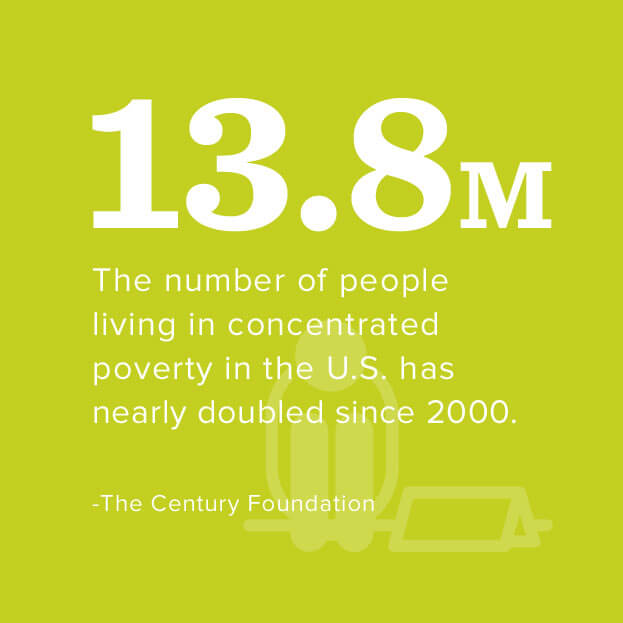
Stories/Solutions
Closing South Africa’s affordable housing gap
The Old Mutual Mupine Development in downtown Cape Town seeks to reverse decades of post-apartheid racial segregation with 700 affordable housing units, recreation facilities, small-scale retail and businesses, pedestrian paths, and plenty of open space.
An award-winning model for community participation
Pittsburgh’s Millvale Ecodistrict charts a course for inclusive, community-led redevelopment with a focus on food, mobility, solar energy, clean water, fresh air, and more.
Designing for diversity in downtown Seattle
The Capitol Hill Ecodistrict remains on the forefront of the broader urban regeneration movement by amplifying underrepresented voices while testing and deploying innovative solutions to the area’s more pressing sustainability challenges.
Transforming a neighborhood while preserving local culture
San Francisco’s Sustainable Chinatown Initiative aims to lead one of America’s most dynamic cultural neighborhoods toward a future of public green housing, upgraded private buildings that maintain cultural heritage, green public spaces, new water infrastructure, and more.
The complexity of large-scale urban and community development will only increase as millions move to cities each year. Traditional public incentives and financing are not enough to drive the change cities need to meet growing demands. With Collective Impact as their framework for change and collaboration as their catalyst, new public-private partnerships are addressing common barriers to social impact in housing, development, placemaking, and green infrastructure. Whether it’s foundations funding nonprofit/for-profit collaboratives or cross-sector groups establishing new “intermediaries” to manage joint effort and money, community leaders are responding with creative partnerships and financing to increase the pace and scale of new projects.

Stories/Solutions
A grassroots approach connects sustainability to economic prosperity
The Talbot-Norfolk Triangle Eco-Innovation District is Boston’s Dorchester neighborhood is leading the development of community solar, fresh investment, and more with input from 1,000+ local residents.
An economic engine in tune with the environment
In Sydney, Barangaroo provides a stunning example of how sustainable development can create prosperous communities that integrate with surrounding ecosystems.
A powerful consortium builds a backbone for Atlanta’s Westside
One of Atlanta’s most historic neighborhoods is undergoing a massive reinvestment led by Westside Future Fund and Westside Neighborhood Prosperity Fund to enhance housing, jobs, pre-K education, green infrastructure, and public safety, all while reducing violence.
A fresh funding approach to transit development
Grants from the Strong, Prosperous, and Resilient Communities Challenge (SPARCC) and new partnerships put a fresh lens on equitable transit development across the country.
As more citymakers recognize the critical role they play in improving public health, the tools at their disposal are becoming more advanced. The timing could not be more critical: There is a huge gap in health between poor and more affluent neighborhoods. Poorer neighborhoods experience greater environmental pollution and less access to nutritious food, reliable public transit, green spaces, and health care. Solving this is critical to creating healthier cities. Urban leaders are responding with smarter design approaches that make healthy living possible while promoting local entrepreneurialism, revitalizing neighborhood business districts, honoring local culture, and creating public spaces that draw community members together. It’s a smarter approach that’s using art, culture, green space, access to fresh food, and recreational opportunities to enliven neighborhoods and encourage economic development.
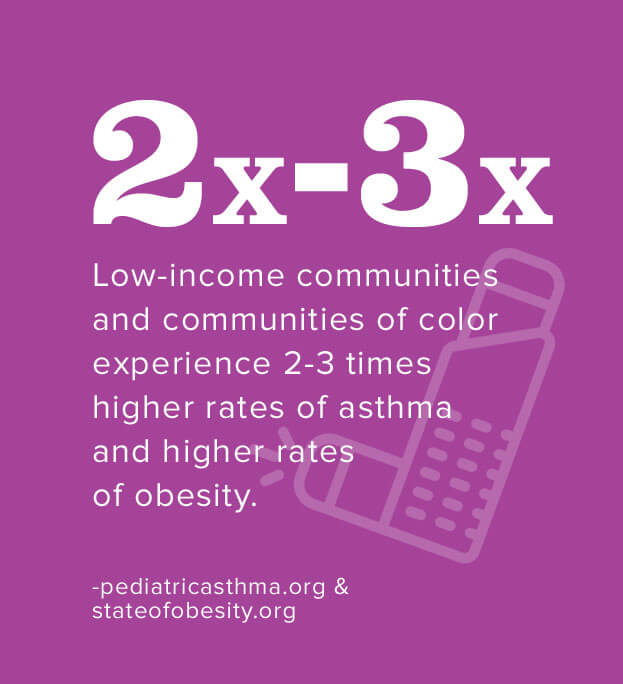
Stories/Solutions
Smarter planning for public health
The Pew Charitable Trusts reveals how Health Impact Assessments give neighborhood planners and public health practitioners a starting point for collaboration.
Mapping a clearer view of
a city’s polluted air
Aclima mobile sensing and Google Street View cars create a data-driven, block-by-block picture of a city’s air quality, showing planners where they can make the biggest impact.
Healthy communities by design
The Mariposa Healthy Living Tool combined evidence, data, and lived experience of area residents to inform decisions that shaped a new mixed-income development in Denver.
Growing a sustainable
community for all
In Denver’s Sun Valley neighborhood, a $30 million redevelopment program centers on six “GROW” priorities, including youth education, local food systems, and affordable housing.
Creative placemaking and
economic development
A new report from LISC looks at how investments in artists, art-related businesses, and cultural organizations fuel economies.
Cities and regions devastated by the increasing frequency and severity of storms, fires, and other natural disasters are desperately looking for better solutions to ensure safe and accessible water and energy systems. New research shows that the cost of retrofitting old water and energy systems for resilience is more expensive than integrating forward-thinking district-scale systems at the design stage. New district energy systems keep the lights on, save money, and keep cities moving, while water systems address storage, demand, delivery, and environmental challenges. This year we saw more neighborhoods and districts moving forward with projects to realize the enormous benefits of district-scale energy and water innovation: Improved energy efficiency, fuel flexibility, environmental protection, ease of operation and maintenance, and decreased capital costs.
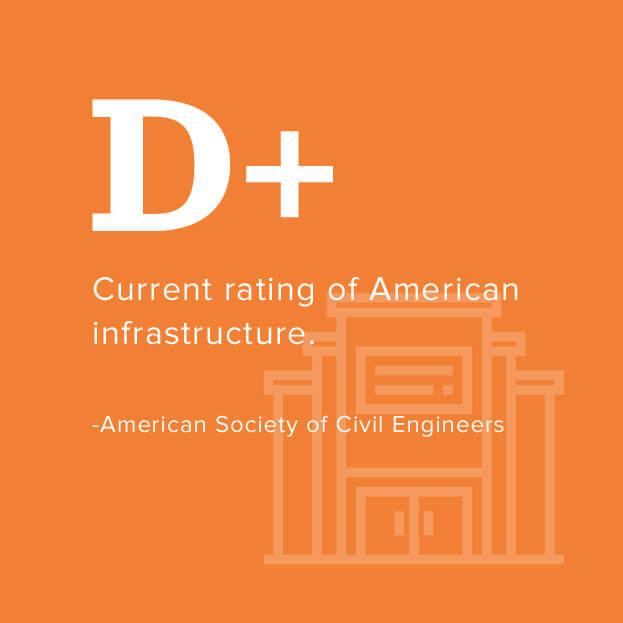
Stories/Solutions
Integrated water management across a city block
Portland’s Hassalo on Eighth project in the Lloyd EcoDistrict has achieved 30% energy savings and 50% water savings with a 100% onsite integrated water management system.
A neighborhood harvests waste to deliver low-carbon heat
In Canada, a first-of-its-kind in North America sewer waste heat recovery plant serves the former 2010 Olympic Village and surrounding neighborhood, resulting in lower costs for its customers and 60% carbon savings over traditional-in-building systems.
Green infrastructure
drives workforce growth
A multigenerational, multibillion-dollar program in Philadelphia addresses climate change, stormwater runoff, sewer overflows, and the need for jobs.
A water management
breakthrough in Atlanta
Emory University is home to the first decentralized ecological water reclamation system in the U.S.
This year, Cities across North America are committing to EcoDistricts Certified, the landmark new standard for sustainable urban and community development. Local leaders are not simply tackling stubborn challenges with new solutions – they’re certifying the work to demonstrate a commitment to transparency and measurable impact. EcoDistricts Certified gives urban and community developments a better way to work with (and not against) communities. A standards-based approach transforms the market and is where an upfront investment in a rigorous development framework yields exponential returns: Leaders get organized, projects happen faster, opportunities grow, people stay where they live, and others move there. It’s a holistic approach to achieving important public policy, sustainability, and investment goals and a better way to move projects from vision to reality.
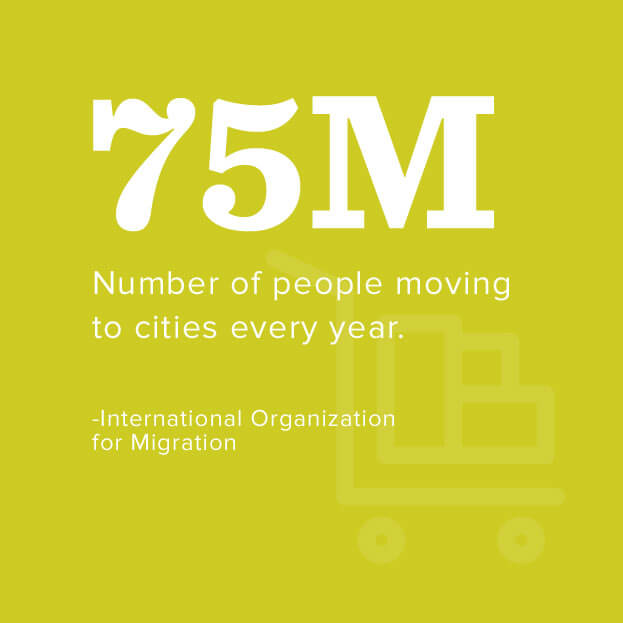
Stories/Solutions
A visible commitment in New York
In Rochester, the 322-acre High Falls Ecodistrict redevelopment will help grow the region sustainably, prepare for climate change, and add green jobs while celebrating the neighborhood’s iconic waterfall as its own clean energy asset.
Transforming from industry to arts
Through a unique operating model that includes a nonprofit, a Business Improvement District and a General Improvement District, Denver’s RiNo Art District – an emerging former industrial area – pulls together artists, developers, businesses, and residents to invest in their future.
A historic revitalization in Miami
The Little Haiti Ecodistrict is galvanizing community to collaborate on comprehensive neighborhood development planning with priorities including sustainability (amidst the effects of gentrification), affordable housing, good jobs, improved health, and increased safety.
Impact

- 78 EVENT & TRAINING SCHOLARSHIPS
- 61 ECODISTRICTS ACCREDITED PROFESSIONALS
- 200 PROFESSIONALS TRAINED
- 65 ATTENDESS AT DISTRICT ENERGY + WATER ACADEMY (2016)

12 PENDING ECODISTRICTS CERTIFIED PROJECTS
- MILLVALE (PITTSBURGH)
- LITTLE HAITI (MIAMI)
- SUN VALLEY ECODISTRICT (DENVER)
- LLOYD ECODISTRICT (PORTLAND)
- RINO ART DISTRICT (DENVER)
- TALBOT-NORFOLK TRIANGLE (BOSTON)
- HIGH FALLS (ROCHESTER, NY)
- CAPITOL HILL (SEATTLE)
- ATL ECODISTRICT (ATLANTA)
- SEAHOLM (AUSTIN)
- EAST HARBOUR (TORONTO)
- SANTA MONICA CITY YARDS (SANTA MONICA)

ECODISTRICTS Advisory Services: BUILDING THE MARKET
- Claiborne Corridor, New Orleans (2017)Learn More
- Johannesburg and Cape Town, South Africa (2017)Learn More
- California High Speed Rail stations (2016-2017)Learn More
- Pier 70, San Francisco (2016-2017)Learn More
- Capitol Hill Ecodistrict, Seattle (2016)Learn More
The Global EcoDistricts Movement

12 PENDING ECODISTRICTS CERTIFIED PROJECTS

- 2370 EVENT ATTENDEES
- 17 COUNTRIES
- 42 STATES
- 352 CITIES
- 2208 ECODISTRICTS PROTOCOL DOWNLOADS
- 59 COUNTRIES
- 48 STATES
- 542 CITIES
What drives us? Empowering neighborhoods for all and the changemakers behind them. From our EcoDistricts Certified standard to our Accredited Professionals program, Advisory Services offerings, annual EcoDistricts Summit, events, trainings, webinars, and much more, we work to empower a growing number of inspired urban changemakers who are reimagining urban and community development as just, resilient, and sustainable, from the neighborhood up.
EcoDistricts Certified
EcoDistricts Accredited Professional
EcoDistricts TRAINING & EVENTS
ECODISTRICTS MAJOR SPONSORS
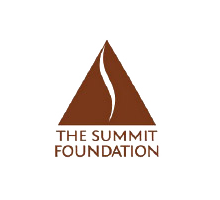
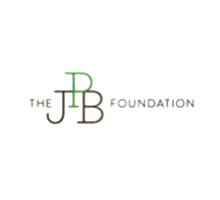
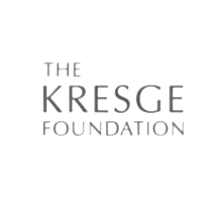

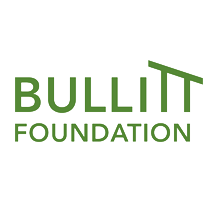







Join Us
We invite you to stand with the growing global community of EcoDistricts donors who support just, resilient, sustainable neighborhoods for all.

